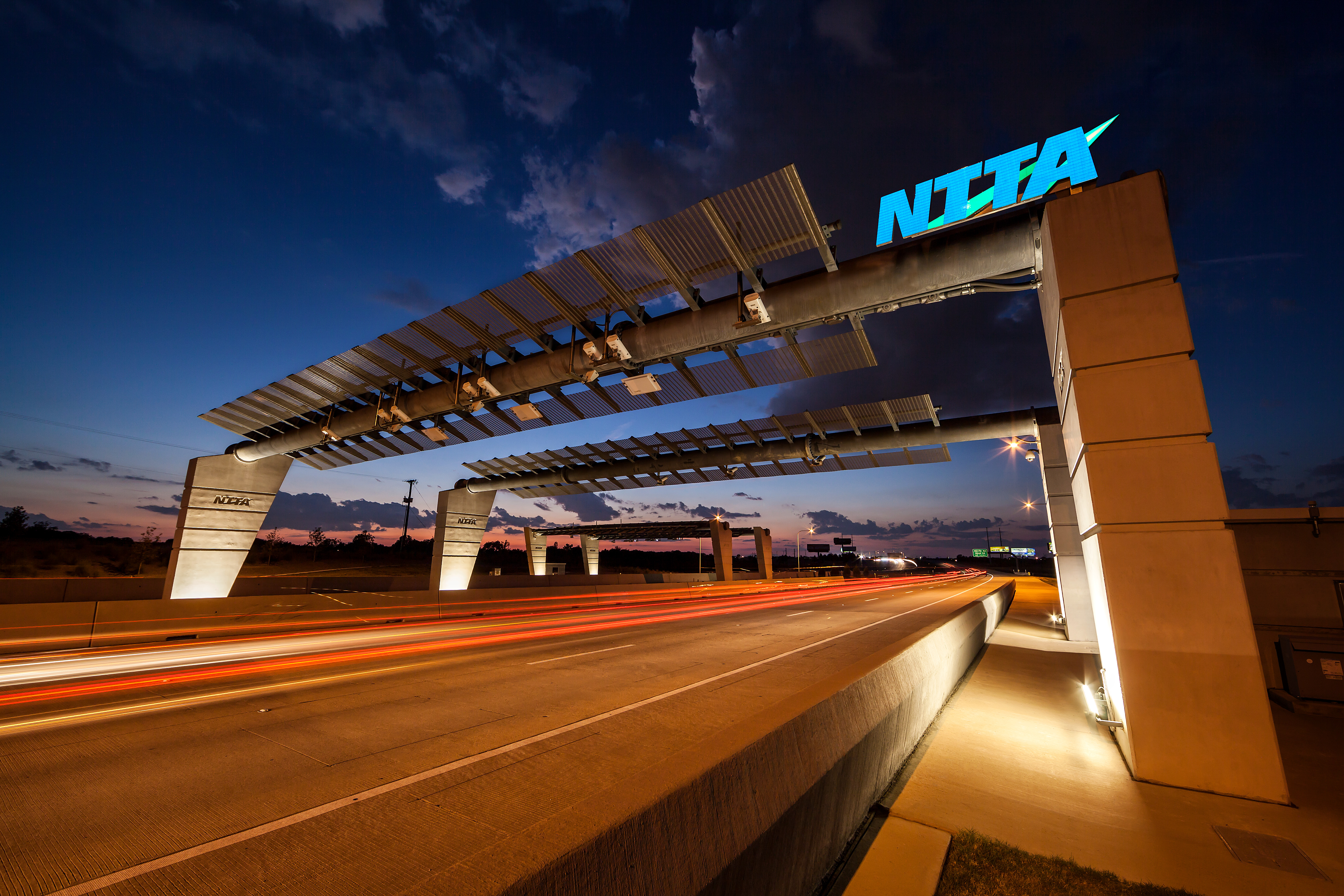
Tolling is becoming the 21st century solution of choice for generating additional user-based transportation revenue. The proven funding source is being seriously considered for expanded use by cities, states and even the federal government with support from elected officials across the political spectrum. In fact, with each federal transportation reauthorisation, tolling restrictions have been relaxed.
In 2005, SAFETEA-LU created four toll demonstration programs to finance interstate construction and reconstruction, promote efficiency in the use of highways and reduce congestion. These were the Interstate System Reconstruction & Rehabilitation Toll Pilot Program, the Interstate System Construction Toll Pilot Program, the Value Pricing Pilot Program and the Express Lanes Demonstration Program.
By 2012, MAP-21 allowed tolling of newly constructed lanes when adding capacity to existing toll-free Interstate highways and tolling for new construction of bridges and tunnels on the interstate system. And last year President Barack Obama’s proposed Grow America Act would have allowed tolling of existing general-purpose lanes on interstate highways to make improvements or manage congestion.
There are other indications that tolling is here to stay too, not least of which is the more than doubling of annual toll revenues in the past decade to $13 billion.
Today, in the United States, there are more than 120 public toll entities that operate nearly 340 tolled facilities. These include 17 state departments of transportation and 19 new toll agencies formed in the past decade during which the total mileage on tolled highways has increased by 11%. States such as Florida and Texas now analyse all big projects to see if tolls can be efficiently utilised.
Tolling is fast becoming a fact of life in the United States as most new mega transportation projects — whether public-private partnerships or publically financed — now have tolling components. While tolling isn’t a prerequisite for public-private partnerships (or P3s) many owners are using tolling as a way to realise these projects. Of the 21 greenfield P3 projects since 2007, no fewer than 18 include a tolling component and most of the recently financed public projects have a tolling component, including New York’s Tappan Zee Bridge, Texas’ Grand Parkway, California’s SR 91 and Kentucky’s Downtown Crossing.
Tolling finances
Most of the major turnpikes created in the 1950s repaid their original debt in the mid-1980s but the tolls were not removed as the toll agencies recognised the importance of leveraging the existing systems to build new projects or subsidise existing modes. For example in 2014, after evaluating transportation needs and funding, Ohio decided to increase tolls on its turnpike to raise $1.5 billion in debt proceeds for 10 new transportation projects including replacing the Innerbelt Bridge and widening portions of Interstate 75.
In Florida the Legislature considered removing tolls from the turnpike system when its bonds were retired in the 1980s, but decided to pass legislation in 1990 to leverage the turnpike to expand its system. Toll rates were doubled, generating more than $1 billion, and a further nine turnpike projects were authorised so that over the following 20 years more than 140 miles were added to Florida’s turnpike system without recourse to federal or state funding.
The North Texas Tollway Authority built $5 billion of additional projects from toll revenues and New York’s Metropolitan Transportation Authority uses revenue from tolls on its tunnels and bridges to subsidise its subway system.
A small number of facilities have removed tolls in the last 30 years, but most were small single-asset facilities or bridges with little opportunity for future expansion and upkeep.
Although rare, when decisions to remove tolls are issued, they are either politically motivated or made automatically after the initial debt is retired. A common argument for eliminating tolls is if the revenue being generated doesn’t cover the facility’s operating and maintenance expenses, as was the case with Florida’s Navarre Bridge in 2004. Still, operating and maintenance expenses must come from some funding source and even if toll revenue only partially pays the costs, that still decreases the need to tap tax funds. In nearly every instance, a stronger case can be made for keeping tolls than for eliminating them.
Agencies wanting to continue tolls have to develop strong rationales and disarm common arguments for toll removal.
Debts repaid
While some may argue that the bonds have been retired and the facility is paid for, it is worth pointing out that entities where the tolls have been removed are now struggling for maintenance and capacity improvement funding due to limited DOT funding. Furthermore, if the next federal reauthorisation grants states even more tolling authority, agencies that have forgone their tolls will have lost their back office and its tolling expertise when they are needed most.Eliminating tolls can even be detrimental to local citizens if the majority of toll revenue comes from out-of-state customers as it leaves residents paying for the upkeep and maintenance of the facility while the incoming users ride for free. Located between New York and Boston, Connecticut removed tolls from its turnpike in 1985 and is now considering reinstating them due to lack of funding, revenue potential and the amount of out-of-state users.
If tolls are removed from a facility, the others remaining in a system must shoulder a higher financial portion of the shared back office and overhead costs, which could leave them unable to pay their own operating and maintenance expenses. Before tolls were removed from the Georgia 400, the facility funded the majority of the back office operations for Georgia’s State Road and Tollway Authority (SRTA). Not only did eliminating tolls leave a hole in SRTA’s operations budget, the proposed 285/400 interchange (now in procurement) could potentially have benefited from the revenues generated if the 400 were still tolled. The removal of tolls has led to the road attracting more users, leading to an increase in traffic volumes and, therefore, noticeably greater congestion.
There is a physical cost to toll removal. Owners don’t switch off the system and walk away - toll booths and/or gantries usually have to be removed for safety reasons and winding down all of the accounting and customer accounts staff and user refunds are also costly.
Political promise
Another common theme is that toll removal was part of a political promise to be delivered if an official gained office. Well, politicians’ promises are not exactly contractually binding, and at current interest rates every $1 in annual toll revenues can produce approximately $17 in upfront bond proceeds. So to remove tolls kills a potential revenue stream the state could use to bond other projects. When tolls were removed from Dallas-Fort Worth Turnpike (I-30) in 1977, it eliminated a revenue stream and delayed additional major capacity improvements on the corridor by almost 35 years.
Many years later one official admitted that removing the tolls was the worst decision he had ever made.
Removing tolls also eliminates a capital program that creates jobs, reduces the opportunity for future funding partnerships and limits opportunities for a regional or state-wide multiple asset financing approach.
Critics of tolling say it is a barrier to attracting new business but many states have toll roads and see new toll roads as positive for economic development while developers cite reliable travel times, better road conditions and better access to transportation hubs. Texas, specifically Austin, Houston and Dallas have had a significant positive economy even with the downturn in the overall economy. Each of those cities are completely dependent on tolls for new facilities and major companies are moving HQs to areas that require toll roads for access because these locations are directly adjacent to toll facilities.
For instance, Toyota’s North American headquarters is moving from a non-tolled region of California to Plano, Texas, at the corner of the Dallas North Tollway and the Sam Rayburn Tollway.
In New Jersey there is commercial development and warehousing springing up around the Turnpike Authority’s recently completed Interchange 6 to 9 Widening Program. Manufacturers and warehouses rely on frequently receiving and shipping loads so operations run more smoothly and considerable money can be saved if there is a reliable and congestion-free transportation network.
Not a tax
Some opponents of tolling see it as a tax but that is not correct – a far more accurate description is a user fee because taxes are paid by all whereas user fees are paid only by users. In addition, there are no ‘free’ roads – they have to be paid for by taxes or tolls, and without tolls it is likely that either taxes would be higher or the infrastructure poorer.Best practices help position tolling for posterity as most toll agencies continue to issue debt to refinance, upgrade and expand their facilities to meet present and future customer demands. Ensuring tolls remain for the benefit and mobility of future generations begins with frequent, open communication that targets two audiences: road users and elected officials.
Necessary funding for new capacity, enhanced safety and higher maintenance standards make a strong argument for tolling, and when road users know toll revenues are spent on improving the facility and safety, they generally approve of long-term tolling.
Indeed the debt incurred to provide better and safer services and facilities is itself a buffer because tolls are not typically stripped away from facilities that have outstanding financial obligations. It would be difficult for another entity to pay off or take over the debt in the absence of toll revenue. That said, debt should be used only to help fund needed projects in a capital plan.
Once convinced of tolling’s merits, elected officials often must answer their constituents’ questions (leaving the tolling agency ahead of the game), so strong legislative ties are invaluable to safeguarding tolls’ longevity. And as the initial bonds are retired, agencies should be ready with an effective, proactive communications plan to inform elected officials and road users about how tolls will be used after the debt is paid.
Tolling is becoming more commonplace — not only because it can deliver large, near-term transportation infrastructure projects but also for long-term benefits. Leveraging tolls reveals user-based revenue for what it truly is — a financing power tool that continues to produce long after initial construction and the initial debt have been paid.











